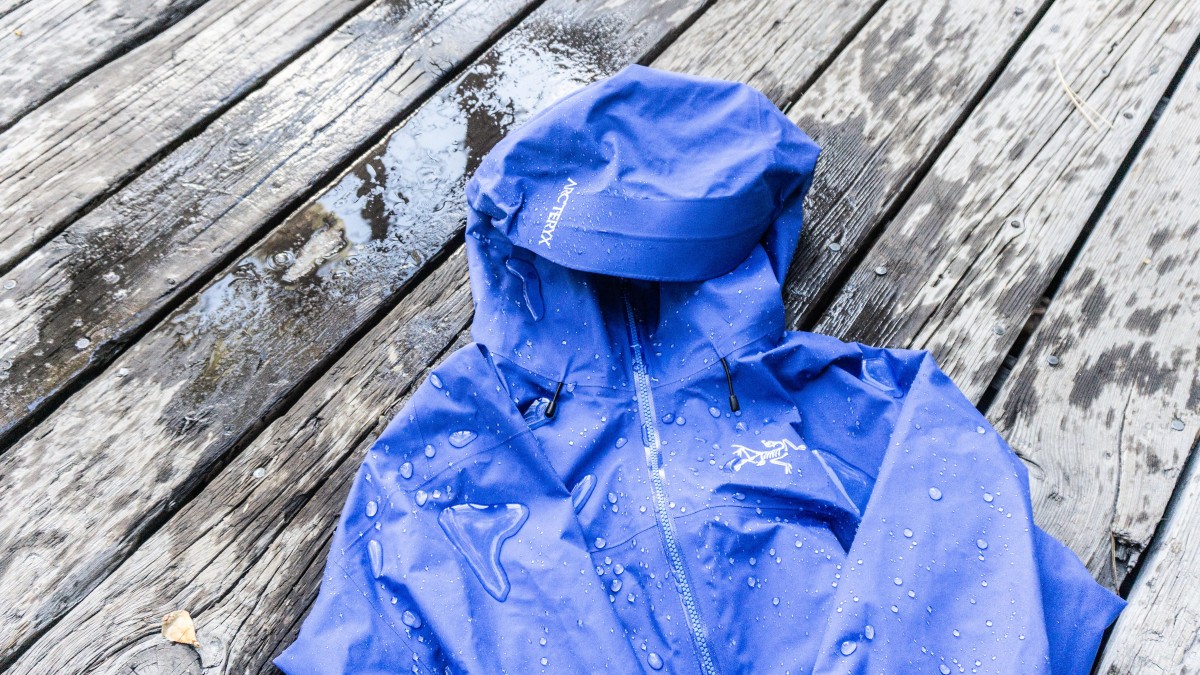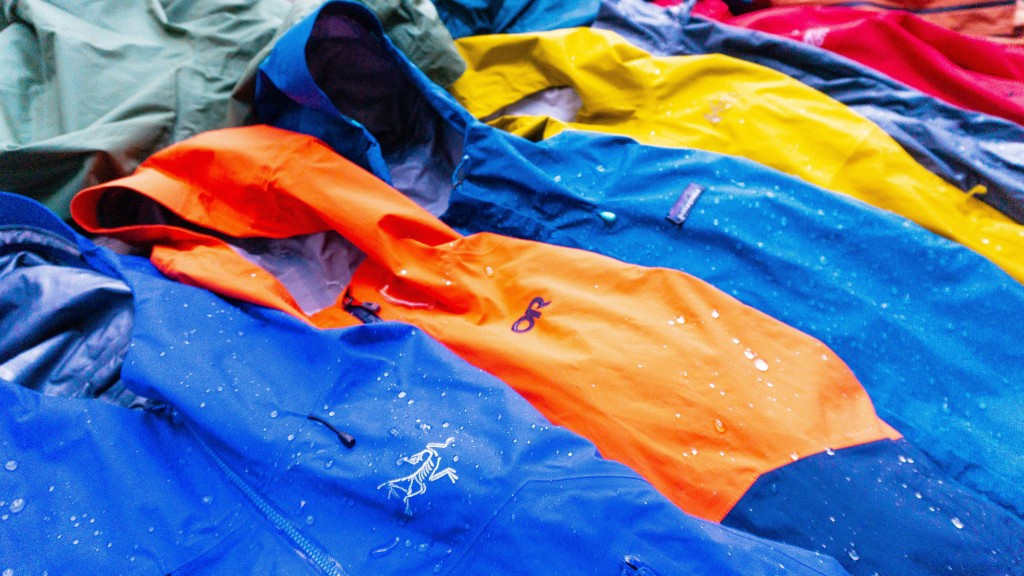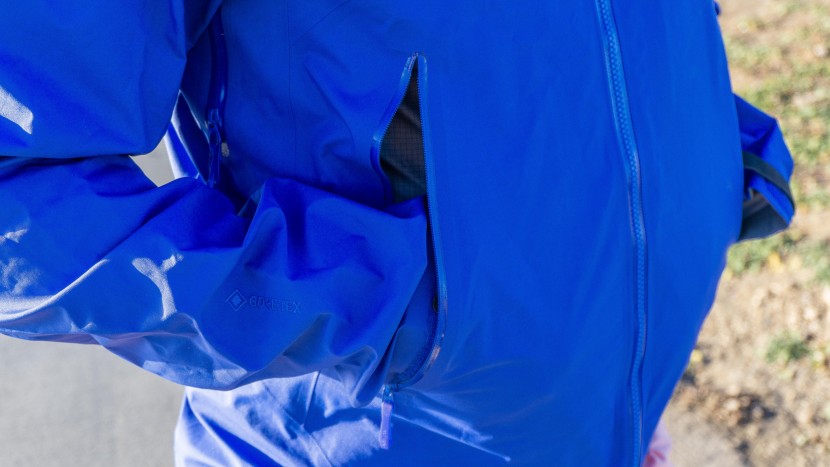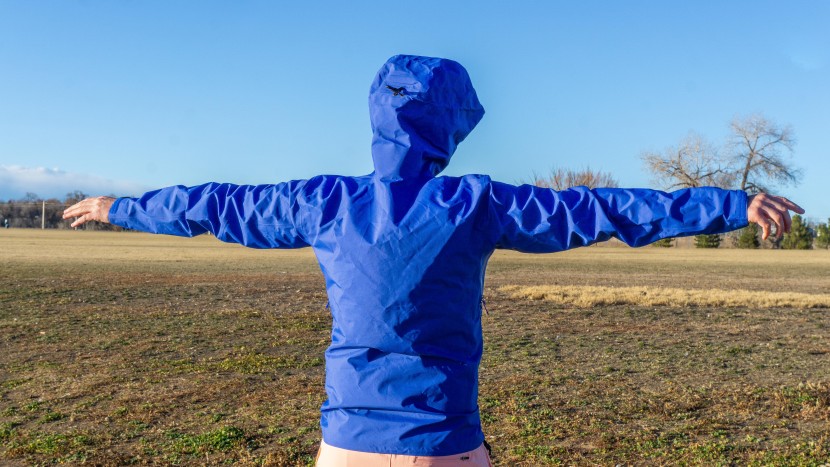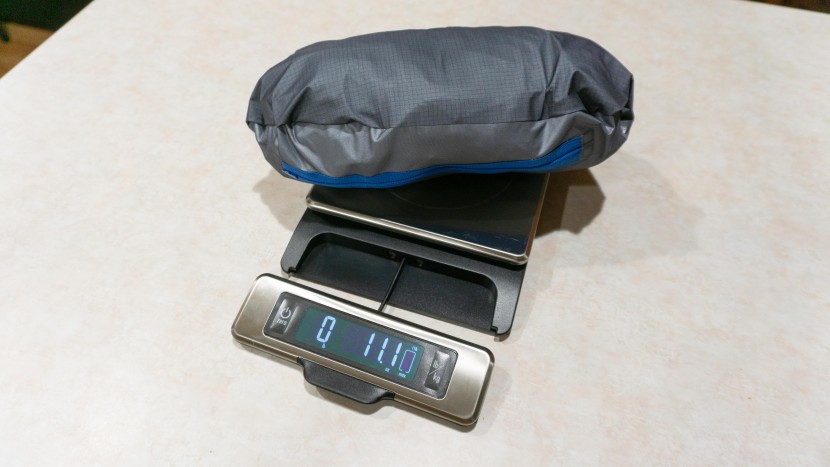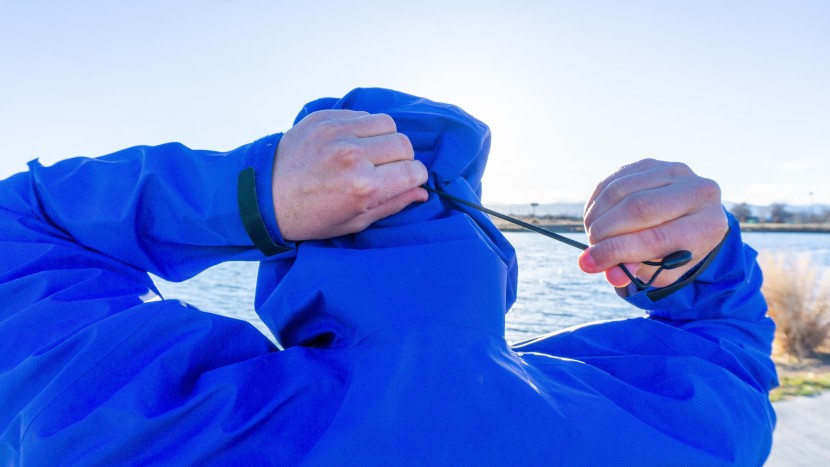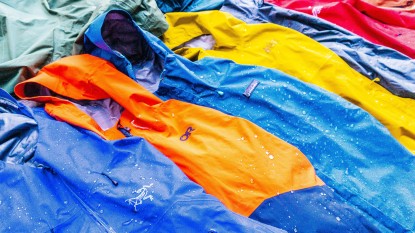The new Beta SL jacket features a three-layer 40dx70d Gore-Tex material with a PFC-free ePE membrane, making it the most lightweight model in Arc'teryx's highly popular Beta line. It was previously labeled the “LT” model, but is now referred to as “SL” for “superlight.”
Our Verdict
The new Beta SL jacket features a three-layer 40dx70d Gore-Tex material with a PFC-free ePE membrane, making it the most lightweight model in Arc'teryx's highly popular Beta line. It was previously labeled the “LT” model, but is now referred to as “SL” for “superlight.”
Compare to Similar Products
 This Product
Arc'teryx Beta SL | |||||
|---|---|---|---|---|---|
| Awards | Outstanding Premium Pick | Best Overall Rain Jacket | Best Breathability and Mobility | Best Bang Bang for the Buck | Best on a Tight Budget |
| Price | $500 List $500.00 at REI | $179.00 at REI Compare at 3 sellers | $172.99 at Backcountry Compare at 3 sellers | $110.00 at Amazon Compare at 3 sellers | $59.99 at Backcountry Compare at 2 sellers |
Overall Score  |
|||||
| Star Rating | |||||
| Bottom Line | A light and highly capable shell jacket from Arc’teryx for shoppers needing the best and are willing to pay for it | This well-made jacket offers high-end performance without having to spend big dollars | This stretchy model offers excellent freedom of movement, making it a great option for someone looking for a jacket they can wear on the move | A well-made rain jacket that carries your dollar exceptionally far | An incredibly inexpensive layer for shoppers on a tight budget needing a rain jacket |
| Rating Categories | Arc'teryx Beta SL | Patagonia Torrentsh... | Mountain Hardwear S... | Helly Hansen Loke | Columbia Watertight II |
| Water Resistance (45%) | |||||
| Breathability (20%) | |||||
| Comfort and Mobility (15%) | |||||
| Weight (10%) | |||||
| Construction Quality (10%) | |||||
| Specifications | Arc'teryx Beta SL | Patagonia Torrentsh... | Mountain Hardwear S... | Helly Hansen Loke | Columbia Watertight II |
| Measured Weight (Men's Small) | 11.2 oz | 12.7 oz | 9.6 oz | 8.4 oz | 12.7 oz |
| Number of Fabric Layers | 3 | 3 | 2.5 | 2.5 | 2 |
| Waterproof Fabric Material | 3-layer 40dx70d PFC-free Gore-Tex, ePE membrane, Gore C-KNIT backer, FC0 DWR finish | 3-layer H2No Performance Standard 50D ECONYL (proprietary material) with a PFC-free DWR finish | 2.5-layer 50D Dry.Q (proprietary material) | 2.5-layer Helly Tech Polyamide (proprietary material) with a PFC-free DWR finish | 2-layer Omni-Tech (proprietary material) with mesh liner |
| Pockets | 2 zippered hand, 1 zippered interior chest | 2 zippered hand | 2 zippered hand, 1 zippered chest | 2 zippered hand | 2 zippered hand |
| Pit Zips | Yes | Yes | Yes | Yes | No |
| Pit Zip Length | 12.0" | 11.5" | 12.5" | 11.6" | N/A |
| Stows Into Pocket | Yes | Yes | Yes | Yes | Yes |
| Carabiner Loop in Stow Pocket | No | Yes | No | No | No |
| Helmet Compatible Hood | Yes | Yes, but very snug fit with partial coverage | Yes, but snug fit with partial coverage | Yes, but snug fit with partial coverage | Yes, but snug fit with partial coverage |
| Hipbelt Friendly Hand Pockets | Yes | No | No | No | No |
| Additional Features | Adjustable StormHood, pit vents, WaterTight Vislon zipper, chin guard, adjustable Velcro cuffs, dual lower hem adjusters, RECCO emergency reflector aids | 2-way adjustable and stowable hood, microfleece-lined neck, external and internal zipper storm flaps, chin guard, adjustable Velcro cuffs, drawcord hem, carabiner clip-in loop | Adjustable hood, adjustable Velcro cuffs, dual lower hem adjusters, carabiner clip loop | Adjustable hood, front placket/storm flap, adjustable Velcro cuffs, adjustable drawcord hem | Adjustable hood, chin guard, adjustable Velcro cuffs, adjustable drawcord hem |
Our Analysis and Test Results
We thoroughly enjoyed wearing the Beta SL, even in prolonged storms, alpine monsoons, and wet snow storms near the coast. This garment handled everything we threw at it, and it is worthy of your consideration if performance is prioritized over price. Our main reviewer, Zach Lovell, concluded “This is a high-end option that classifies more as a hardshell jacket, and I was easily able to use this as a winter skiing shell as much as a summertime rain layer.”
Water Resistance
The primary function of a rain jacket is to resist water, so this was a top focus in our testing of the Beta SL and all other jackets in the lineup. We took field testing seriously, logging several hours outdoors in poor weather, from light drizzles to fierce thunderstorms. Then, we performed a standardized series of tests in our home “lab,” including a shower test, to more objectively assess water protection. We took detailed notes about every jacket's response to various precipitation scenarios at every step. This model led the pack.
Despite its modest weight, the Beta SL is an excellent jacket for weather protection, performing admirably over weeks of field testing. From steady drizzles to monsoonal downpours, our underlayers remained mostly dry, with just a little water making its way through at the sleeves and around the neck area due to various movements leaving openings for rain to sneak in slightly. As we got further along in our testing process and the jacket began to get dirty, it was essential to wash/dry the Beta SL to re-activate the DWR (durable water repellent) coating. We found when the fabric became dirtier, the jacket allowed moisture inside slightly, particularly in the shoulders and chest areas, where the rain first hit.
The material used in this garment boasts three-layer 40dx70d Gore Tex with an ePE membrane, which is the latest update from Gore. The “ePE” stands for expanded polyethylene, which is more environmentally friendly and claims to make the jacket lighter and more durable. An ePE membrane is thinner than the commonly used PFAS membrane, making the face fabric more robust. Additionally, PFAS are now known to be harmful to the environment and the wearer, and laws dictating their removal from design have gone into effect worldwide. Most gear manufacturers are working to remove PFAS from their products, if they haven't already done so. Our review team summarized the SL's performance in field testing with this: “Bottomline, this rain jacket has outperformed any of the competition in our review in this metric and is among the most impressive I've tested yet.”
In our more objective shower testing, the Beta SL further confirmed this excellent water resistance assessment with only 2 square inches of wet spots appearing. This pricey garment is worth your hard-earned cash if you need top-tier weather protection. For shoppers needing an even more robust jacket for inclement weather, check out our review on the best hardshell jackets.
Breathability
Since most shoppers will use their rain jacket while recreating outdoors, how the Beta SL, and every other option, performs when engaged in sweaty activities was an important metric to evaluate. We tested this by logging hours and hours hiking, climbing, skiing, and camping. We also performed a standardized uphill test with each garment, sizing up the surface area of sweat that soaked our underlayers afterwards. Lastly, we sized up the ventilation features of each jacket. The Beta SL came in towards the top of the lineup in this metric.
In our experience, any jacket designed primarily to repel water can't also be highly breathable, so our scoring in this metric is more about the relative performance between the two. As mentioned, the Beta SL has a thinner membrane than its previous iteration, which claims to improve breathability. Thorough testing confirmed this claim. We found the SL among our lineup's more breathable rain jackets. It also enabled us to easily improve ventilation using its pit zips, a feature that does not exist in all Beta models. As with most jackets in testing, breathability significantly improved when moving through cooler temperatures or out on lower output missions. However, if you're on a lengthy uphill hike or climb and it's not raining, we'd recommend keeping your rain jacket in your pack, as you'll likely get wet from the inside out.
Comfort and Mobility
Comfort and mobility were examined by logging several days of varied activities while wearing each jacket, from hiking to fishing to climbing. We also performed a series of standardized movements in each jacket, carefully noting any restrictions to our range of motion and any rise in the arms or at the midsection, noting the Beta SL delivered above average results.
The Beta SL scored fairly well in comfort and mobility, but its slimmer cut put some of our review team between sizes. The fit can be adjusted to some degree by simply sizing up or down one size, but some shoppers may find one size too loose, and another too tight. Our main tester found a men's small to work well when wearing just a base layer underneath the Beta SL. Still, it got tight when adding more insulation or participating in more arm-intensive activities like climbing. With a medium, our tester found the Beta to be more versatile for year-round use, though it was a bit baggier fit overall.
The C-KNIT backer technology boasts a much better next-to-skin feel than many rain jackets, improving the overall score of the Beta SL in this metric.
Weight
We simply assessed this metric by weighing each option and comparing, using a weight ratings calculator to distill our findings on a 1-10 scale. The Beta SL came in towards the top of the pack.
At 11.15 ounces, the Beta SL is a fairly light rain jacket, particularly considering its excellent performance in other metrics. The “SL” stands for superlight, and while we wouldn't go as far as to call it “super light”, its weight is far more reasonable than other high-performing shell jackets.
Construction Quality
We evaluated the materials utilized in each jacket's construction to understand the quality better, and then we looked closely at the workmanship. We also took detailed notes of the wear and tear of each model while conducting our rigorous field testing. Lastly, we researched other users' long-term findings to unearth any reported defects or outlying issues with each product. Once again, the Beta SL came in above average compared to the pack.
The Beta SL offers a generally superior quality of construction, setting a high bar in the world of rain jackets. The outer is made with 70 denier nylon in the higher abrasion areas such as the arms and shoulders, compared with only a 40 denier nylon in the lower abrasion areas, such as the torso. As previously mentioned, the ePE update in the membrane is meant to improve the overall life of the jacket in addition to other performance benefits. Some have reported this model requires more washing and care to maintain its DWR coating. Our experience was similar in practice, slightly reducing its score in this metric. The features of this garment are also well made and easy to use, though one of the face cinching cords became permanently elongated early on in testing, also bringing its score down a tad.
Should You Buy the Arc'teryx Beta SL?
The Arc'teryx Beta SL offers excellent performance for those wanting a lightweight, high-end product and don't mind a very high price point for a rain jacket. To maximize the performance of this layer, one will need to keep it clean to keep the DWR coating effective, and the sizing might be a touch tricky for some shoppers. At the end of the day, this is undoubtedly one of the best rain jackets available on the market today if you prioritize performance over price.
What Other Rain Jackets Should You Consider?
If price is your main hesitation, look at the Patagonia Torrentshell 3L, which offers excellent water resistance at a fraction of the price. If you're a big fan of the Beta series from Arc'teryx, the Arc'teryx Beta is 20% cheaper than the Beta SL, with top scores across the board, although it isn't quite as water resistant nor as breathable.


